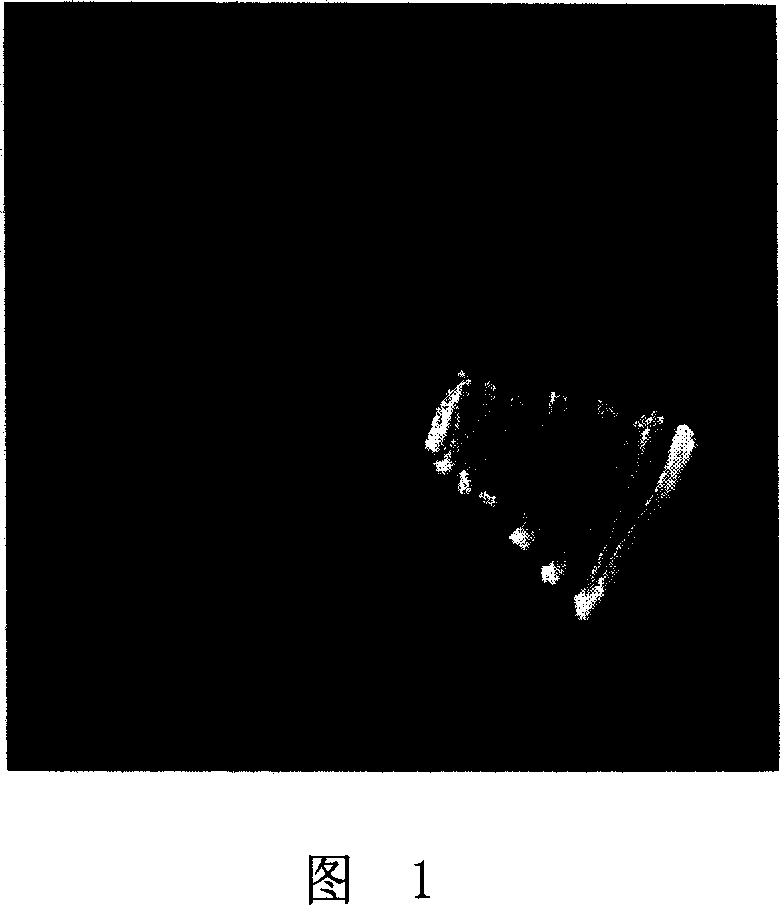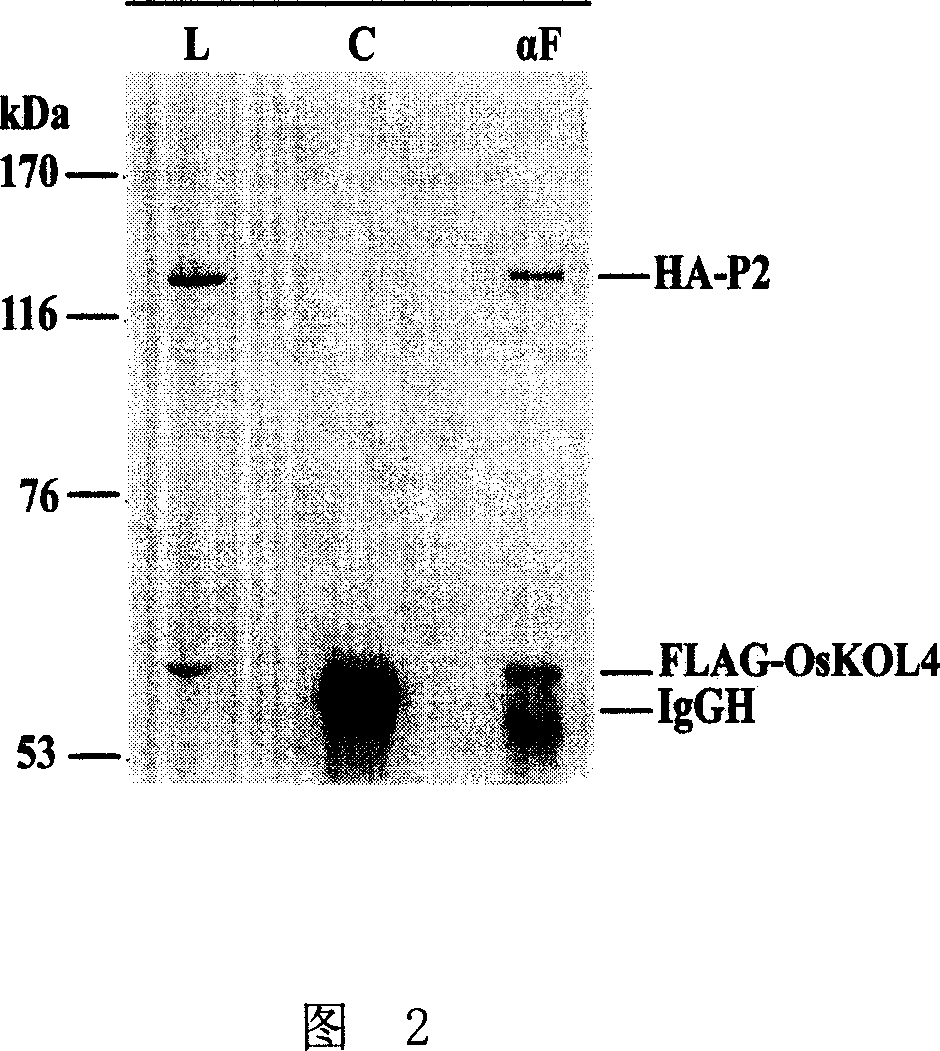Method for increasing rice resistance to stunt virus
A dwarf virus, rice technology, applied to other methods of inserting foreign genetic material, DNA/RNA fragments, introduction of foreign genetic material using vectors, etc., can solve problems such as undiscovered existence
- Summary
- Abstract
- Description
- Claims
- Application Information
AI Technical Summary
Problems solved by technology
Method used
Image
Examples
Embodiment 1
[0029] Example 1. Yeast two-hybrid method for detection of cytokines interacting with RDV-P2 in rice
[0030] Using RDV-P2 as the bait protein, yeast two-hybrid method was used to detect cytokines interacting with RDV-P2 in rice. This example uses the MATCHMAKER system. In the MATCHMAKER system, the bait protein is fused to the DNA-binding domain (DNA-BD) of yeast GAL4, and the cDNA library is fused to the activation domain (AD) of GAL4. When the bait protein interacts with the library protein in the yeast reporter gene system, DNA-BD and AD approach each other to form a recombined transcription factor to activate the expression of the four reporter genes. Use the MatchMaker GAL4Two-Hybrid System 3 kit of Clontech Company and operate with reference to the kit instructions (the carrier and bacterial strain used in this example are provided by the kit unless otherwise specified), the specific process includes the following steps:
[0031] 1. Construction of healthy rice cDNA li...
Embodiment 2
[0040] Example 2. Cloning of the full-length sequence of OsKOS1 and further verification of the interaction between OsKOS1 and RDV-P2 by yeast two-hybrid method
[0041] 1. Cloning of the full-length sequence of OsKOS1
[0042] 1. Design the 5' end primer for cloning OsKOS1
[0043] The nucleotide sequence of the cDNA fragment of OsKOS1 screened in Example 1 was analyzed by blast (Basic Local Alignment Search Tool) on the NCBI website. As a result, the similarity between it and a cDNA fragment of rice (GenBankNo.AF088220) reached 95%. %, this fragment is a similar sequence of rice cytochrome P450. The amino acid residue sequence encoded by the retrieved cDNA fragment was compared with the amino acid residue sequence in the rice cytochrome P450 library. The amino acid residue sequences are completely identical. After searching in the rice genome database, the gene Scaffold4604 corresponding to CYP701A8 was obtained, and the amino acid residue sequence encoded by it was compa...
Embodiment 3
[0048] Example 3. Verification of the interaction between OsKOS1 and RDV-P2 by co-immunoprecipitation experiments
[0049] Mammalian cell expression system was used to verify the interaction between RDV-P2 and endogenous-kaurene oxidase-like protein OsKOS1 by co-immunoprecipitation experiments. Referring to the experimental methods of Han et al. and Huang et al. (Han et al., Mechanisms of the TRIF-induced interferon-stimulated response element and NF-κB activation and apoptosis pathways, J Biol Chem, 279:15652-15661, 2004; Huang et al., ZNF216 is an A20-like and IκB kinase γ-interacting inhibitor of NFκB activation, J Biol Chem, 279:16847-16853, 2004), the specific process includes the following steps:
[0050] 1) Construction of eukaryotic expression vectors of RDV-S2 and OsKOS1
[0051] RDV-S2 was cloned into the mammalian cell expression vector pRK-7-HA-Neo (Han et al., Mechanisms of the TRIF-induced interferon-stimulated response element and NF-κB activation and apoptosis...
PUM
 Login to View More
Login to View More Abstract
Description
Claims
Application Information
 Login to View More
Login to View More - R&D
- Intellectual Property
- Life Sciences
- Materials
- Tech Scout
- Unparalleled Data Quality
- Higher Quality Content
- 60% Fewer Hallucinations
Browse by: Latest US Patents, China's latest patents, Technical Efficacy Thesaurus, Application Domain, Technology Topic, Popular Technical Reports.
© 2025 PatSnap. All rights reserved.Legal|Privacy policy|Modern Slavery Act Transparency Statement|Sitemap|About US| Contact US: help@patsnap.com



